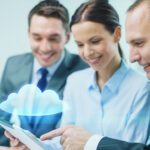Salesforce Service Cloud Implementation: The Ultimate Guide
Author
December 11, 2018
Salesforce is a leading Customer Relationship Management (CRM) platform, but businesses often struggle with data management, predictive insights, and workflow automation. Machine Learning (ML) with Python can enhance Salesforce capabilities by enabling data-driven decision-making, intelligent automation, and process optimization.
Why Machine Learning is Essential for Salesforce Implementation?
Salesforce handles massive amounts of customer data, but manually analyzing this data is inefficient. Machine Learning (ML) bridges this gap by:
✅ Predicting customer behavior
✅ Optimizing lead scoring & sales forecasting
✅ Automating repetitive CRM tasks
✅ Enhancing customer support with AI-driven insights
How Python Enhances Salesforce Implementation?
Python is a widely used programming language for ML and AI development. It offers powerful libraries like:
✔ Pandas – Data manipulation
✔ NumPy – Numerical computing
✔ Scikit-learn – Machine Learning models
✔ TensorFlow/PyTorch – Deep Learning
✔ Simple-Salesforce – Salesforce API integration
from simple_salesforce import Salesforce
import pandas as pd
# Connect to Salesforce
sf = Salesforce(username=’your_username’, password=’your_password’, security_token=’your_token’)
# Extract data
query = “SELECT Name, Industry, AnnualRevenue FROM Account”
data = sf.query_all(query)
df = pd.DataFrame(data[‘records’])
print(df.head()) # Preview extracted data
Machine Learning Use Cases for Salesforce
Predictive Lead Scoring
ML analyzes historical sales data to rank leads based on conversion likelihood.
Sales Forecasting
Python-based ML models predict future sales trends, helping businesses make data-driven decisions.
Sentiment Analysis in Customer Support
ML algorithms analyze customer interactions to detect positive or negative sentiment, improving customer service responses.
Automated Workflow Optimization with Macros in Salesforce
Machine Learning combined with macros in Salesforce helps automate time-consuming CRM tasks.
How Macros in Salesforce Enhance ML Automation?
Macros in Salesforce allow users to perform multiple actions with a single click, improving efficiency.
✔ Use Case: A customer service agent receives hundreds of tickets daily. Instead of manually categorizing, escalating, and responding, an ML model analyzes ticket urgency and a Salesforce macro automates the response workflow.
Example: A macro can automatically
✅ Update case status
✅ Send pre-filled email responses
✅ Assign the case to the correct department
Steps to Implement Machine Learning in Salesforce with Python
Step 1: Extract Data from Salesforce
Use Simple-Salesforce API to fetch customer data.
Step 2: Clean & Process Data
Utilize Pandas & NumPy to remove inconsistencies.
Step 3: Train a Machine Learning Model
Apply Scikit-learn or TensorFlow to build predictive models.
Step 4: Deploy & Automate Insights with Macros
Feed ML predictions back into Salesforce and trigger macros for automation.
Best Practices for Machine Learning with Salesforce
✔ Ensure Data Quality – Clean & preprocess data for accurate predictions.
✔ Choose the Right ML Model – Select models based on business needs (e.g., regression for sales forecasting, classification for lead scoring).
✔ Use Automation – Leverage macros in Salesforce to integrate ML insights into workflows.
✔ Monitor Performance – Continuously evaluate model accuracy.
Conclusion
Machine Learning with Python transforms Salesforce implementation by providing intelligent automation, predictive analytics, and improved efficiency. By integrating ML-driven insights with macros in Salesforce, businesses can automate workflows, enhance decision-making, and boost productivity.
Pranshu Goyal, Director of Products at Mirekta, states: “We envision DSM to be used by every small to a medium-sized organization dealing with bad data and want to get rid of duplicates easily with no cost. We have faced issues dealing with duplicates in our organization. That inspired us to make a solution that is not only simple to use but can be used widely to make the organization’s data clean to make them more efficient and productive. We want DSM to be a solution for every organization looking for duplicate management capability better than the Salesforce out-of-the-box solution with no additional cost.”
Recent Posts
-
 Salesforce API Testing – The Modern QA Approach for Reliable Integrations05 Jan 2026 Blog
Salesforce API Testing – The Modern QA Approach for Reliable Integrations05 Jan 2026 Blog -
 Transforming SMB Sales with Salesforce Commerce Cloud12 Nov 2025 Blog
Transforming SMB Sales with Salesforce Commerce Cloud12 Nov 2025 Blog -
 Generative AI Testing tools03 Nov 2025 Blog
Generative AI Testing tools03 Nov 2025 Blog -
 Mirketa Unveils Next-Gen AI Solutions to Redefine the Future of Work Across Industries29 Jul 2025 Press Release
Mirketa Unveils Next-Gen AI Solutions to Redefine the Future of Work Across Industries29 Jul 2025 Press Release -
 Salesforce Implementation School Universities Higher Education23 Jul 2025 Blog
Salesforce Implementation School Universities Higher Education23 Jul 2025 Blog -
 Salesforce Health Cloud Implementation Partner: A Complete Guide23 Jul 2025 Blog
Salesforce Health Cloud Implementation Partner: A Complete Guide23 Jul 2025 Blog -
 XML Parsing: Using MINIDOM Vs Element Tree (etree) in Python02 Jul 2025 Blog
XML Parsing: Using MINIDOM Vs Element Tree (etree) in Python02 Jul 2025 Blog -
 A step by step Guide to create Salesforce web-to-lead form30 Jun 2025 Blog
A step by step Guide to create Salesforce web-to-lead form30 Jun 2025 Blog -
 How AI is Transforming User Experience Design in 202526 Jun 2025 Blog
How AI is Transforming User Experience Design in 202526 Jun 2025 Blog -
 How a Salesforce NPSP Consultant Can Elevate Nonprofit Impact25 Jun 2025 Blog
How a Salesforce NPSP Consultant Can Elevate Nonprofit Impact25 Jun 2025 Blog -
 Salesforce Load and Performance Testing: Essentials, Importance & Execution23 Jun 2025 Blog
Salesforce Load and Performance Testing: Essentials, Importance & Execution23 Jun 2025 Blog -
 Salesforce Website Integration Boost Leads, Automation & Customer Experience11 Jun 2025 Blog
Salesforce Website Integration Boost Leads, Automation & Customer Experience11 Jun 2025 Blog -
 Driving Results in Manufacturing with Salesforce Manufacturing Cloud11 Jun 2025 Blog
Driving Results in Manufacturing with Salesforce Manufacturing Cloud11 Jun 2025 Blog -
 Accelerating Growth with NetSuite SuiteCommerce02 Jun 2025 Blog
Accelerating Growth with NetSuite SuiteCommerce02 Jun 2025 Blog -
 Salesforce Service Cloud Services streamlining operations29 May 2025 Blog
Salesforce Service Cloud Services streamlining operations29 May 2025 Blog -
 AI for Nonprofits: Mirketa & Exec Precision Webinar27 May 2025 Press Release
AI for Nonprofits: Mirketa & Exec Precision Webinar27 May 2025 Press Release -
 AI for Nonprofits: Use Cases, Tools & Implementation Strategies20 May 2025 Webinar
AI for Nonprofits: Use Cases, Tools & Implementation Strategies20 May 2025 Webinar -
 Javascript Frameworks for Salesforce Lightning Design System18 May 2025 Blog
Javascript Frameworks for Salesforce Lightning Design System18 May 2025 Blog -
 Building a Smart Campus with Salesforce Student Information System: A Road to Smarter Education16 May 2025 Blog
Building a Smart Campus with Salesforce Student Information System: A Road to Smarter Education16 May 2025 Blog -
 Salesforce Nonprofit Cloud: Benefits & Consultant Role15 May 2025 Blog
Salesforce Nonprofit Cloud: Benefits & Consultant Role15 May 2025 Blog




























